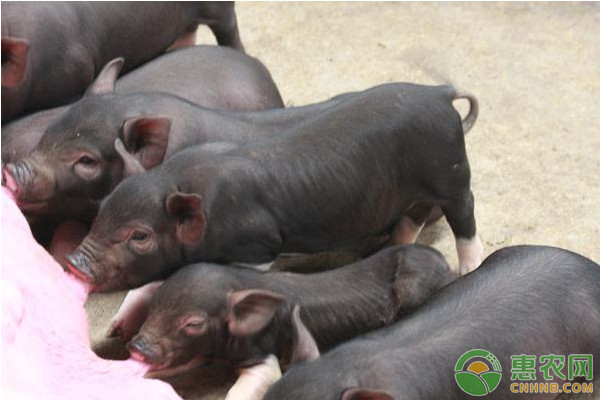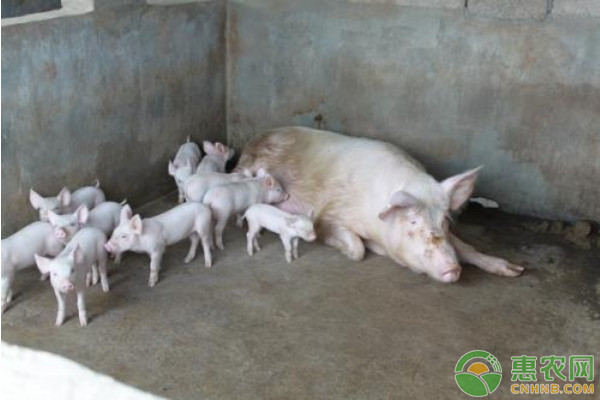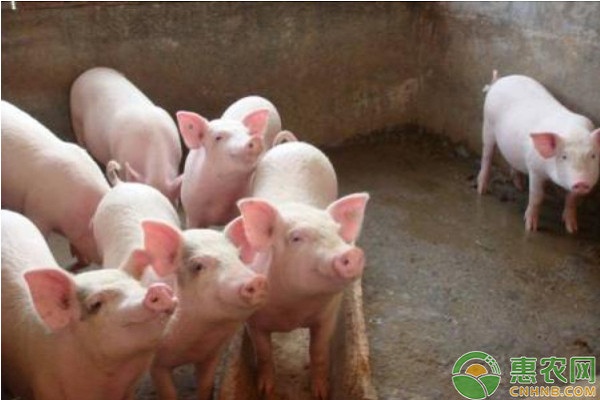Harm of pig parasitic diseases and its prevention and control measures
Parasitic diseases often occur in the intestines of pigs. The occurrence of such diseases can cause vomiting and diarrhea in pigs. How to prevent intestinal parasitic diseases in pigs? Let's take a look at what the experts say.

1 Introduction to common parasitic diseases and their harm in pig breeding
1.1 The incidence and harm of sarcocystosis
The sarcocyst disease of pigs is a parasitic disease that is more common in pig breeding. It is mainly grown in pig cells. After the parasitic disease occurs in pigs, there is no obvious clinical manifestation in the early stage, but as the parasites multiply in the pig cells, the harm to the various cells of the pigs gradually increases, which is more obvious. Symptoms such as muscle atrophy. This parasitic disease can cause poor quality of pork, and if the pork enters the market, it will cause greater harm to the human body after being consumed by consumers. There is no effective treatment for this disease at this stage. Therefore, prevention must be strengthened during the pig breeding process to avoid this parasitic disease.
1.2 Causes and harms of intestinal tsutsugamushi disease in pigs
Ascariasis is a type of intestinal parasitic disease in pig breeding. The cause of the disease is mainly due to the fact that pigs eat foods containing aphid eggs during feeding, and the eggs of the aphids hatch in the intestines of pigs and grow and multiply. This parasitic disease occurs in pigs. However, this disease also has a characteristic that if the pig has adulthood, if it has a good growth state and resistance, even if it is infected with this parasitic disease, there will be no obvious symptoms. However, for piglets in the growing season, due to poor resistance, if the disease is infected, a large amount of nutrients will be absorbed by the aphids, resulting in malnutrition and anemia in the piglets. The main symptoms are abdominal pain and diarrhea in pigs. If the incidence is serious or even intestinal obstruction, there is a clinical situation in which pigs die due to this parasitic disease, so it must be brought to the attention of the farmers.

1.3 Causes and introduction of toxoplasmosis
Toxoplasmosis and sarcocystosis are similar, and are all parasitic diseases within the cell. After the occurrence of this disease, it will have a more serious impact on the respiratory tract and digestive tract, accompanied by symptoms such as vomiting. This parasitic disease is contagious, so sick pigs should be isolated from healthy pigs during the breeding process. In the middle of the infection, the body temperature of the sick pig will have a more serious fever, and in severe cases, it can reach 40 °C or above. At the same time, sick pigs will show symptoms such as loss of appetite and poor breathing. At this time, the in vitro observation of the sick pigs revealed severe coughing and corneal congestion. The skin of the sick pig will appear in the local area of ​​blood stasis and bruising, and this situation will show a tendency to spread as the condition worsens. At the same time, diarrhea and constipation are aggravated, and severe cases can lead to death.
2 Common intestinal parasites in pigs and prevention and control measures
2.1 Do a good job of killing eggs and larvae
The spring and autumn seasons are the high incidence of pig parasitic diseases. This is mainly due to the growth and reproduction of parasites in conditions such as temperature in these two seasons. In the spring, due to the warming of the weather, eggs continue to hatch into larvae, and in the autumn many animals begin to breed and require a large amount of nutrient consumption. Therefore, in these two seasons, the incidence of pig parasitic diseases is higher. In order to achieve the improvement of the prevention and control effect on the parasitic diseases of pigs, it is necessary to first kill the eggs and larvae and strengthen the insect repellent effect. In general, piglets are the main target of parasitic diseases due to their weak resistance. Therefore, the first deworming will be carried out within 1 month to 40 days after the birth of the piglet. At the same time, a special deworming plan should be established, and basically one deworming operation should be carried out every two months. In the selection of deworming drugs, we should pay attention to selecting appropriate deworming drugs according to the actual incidence. The selection principle first requires that the deworming drugs will not affect the normal growth of pigs, and have a good deworming effect. One or two days after deworming, the deworming effect can be evaluated by observing the pig manure.

2.2 Disinfect the breeding site in time
By disinfecting the breeding site, the various environments required for the growth and reproduction of the parasite can be effectively reduced. Therefore, it is necessary to strengthen the disinfection treatment of breeding sites. First, the manure in the pig house should be cleaned to avoid providing a place for parasite reproduction. Secondly, the pig manure can be accumulated for a long time, and the heat generated by the fecal fermentation kills the parasite eggs and larvae. Thorough disinfection of the floor and walls of the pig house and the trough of the pig. In summer, due to the high temperature, mosquitoes and flies are more serious, so it is necessary to ensure that there are no parasite eggs in the feed and water used for raising pigs. In short, a clean farming site can effectively ensure that pigs are protected from parasitic diseases.
Through the study of various intestinal parasitic diseases causing vomiting in pigs at present, we can find that after years of development, China's pig breeding industry has achieved great improvement, and pig breeding has become one of the important means for farmers to increase their income. . However, the parasitic diseases that are more common in the pig breeding process have affected the efficiency of pig breeding. Effective measures must be taken to effectively prevent and control the parasitic diseases, so as to improve the effect of pig breeding in China. The above content is reproduced from the headline number Jishan Huayao, and the favorite farmers can pay attention.
More exciting pictures and hot comments about the intestinal parasitic diseases of pigs, click below to view the original ↓ ↓ ↓
One Step SARS-CoV2(COVID-19) IgG/IgM Test
IgG and lgM antibodies to 2019 Novel Coronavirus can be detected with 2-3 weeks
after exposure.lgG remains positive,but the antibody level drops overtime.
One Step SARS-CoV2(COVID-19) IgG/IgM Test Kit
NINGBO AUTRENDS INTERNATIONAL TRADE CO., LTD , https://www.metests.com